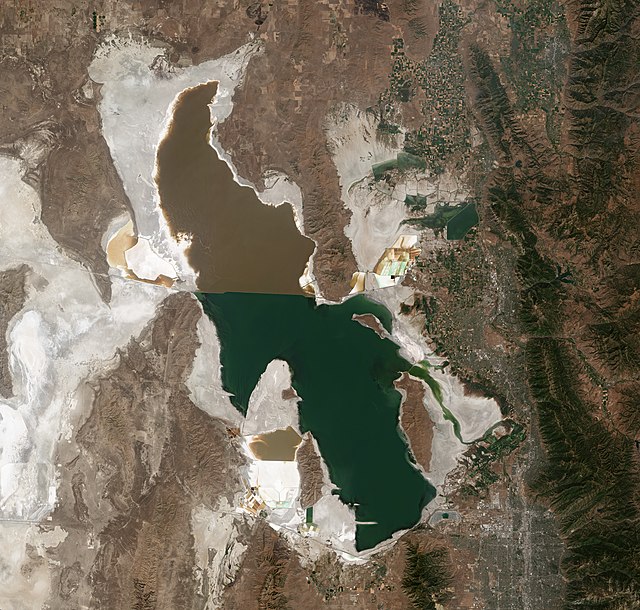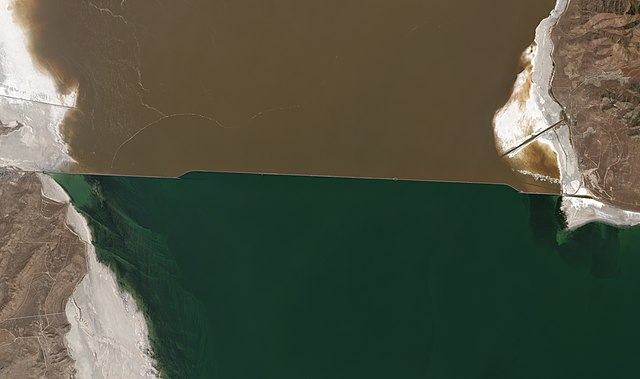Magnesium chloride is an inorganic compound with the formula MgCl2. It forms hydrates MgCl2·nH2O, where n can range from 1 to 12. These salts are colorless or white solids that are highly soluble in water. These compounds and their solutions, both of which occur in nature, have a variety of practical uses. Anhydrous magnesium chloride is the principal precursor to magnesium metal, which is produced on a large scale. Hydrated magnesium chloride is the form most readily available.
Magnesium chloride
Picture of truck applying liquid de-icer (magnesium chloride) to city streets.
The Great Salt Lake is the largest saltwater lake in the Western Hemisphere and the eighth-largest terminal lake in the world. It lies in the northern part of the U.S. state of Utah and has a substantial impact upon the local climate, particularly through lake-effect snow. It is a remnant of Lake Bonneville, a prehistoric body of water that covered much of western Utah.
Satellite photo from August 2018 after years of drought, reaching near-record lows. Note the difference in colors between the northern and southern portions of the lake, the result of a railroad causeway.
Great Salt Lake from airspace over Salt Lake City
Color difference
Sunset viewed from White Rock Bay, on the western shore of Antelope Island. Carrington Island is visible in the distance.






